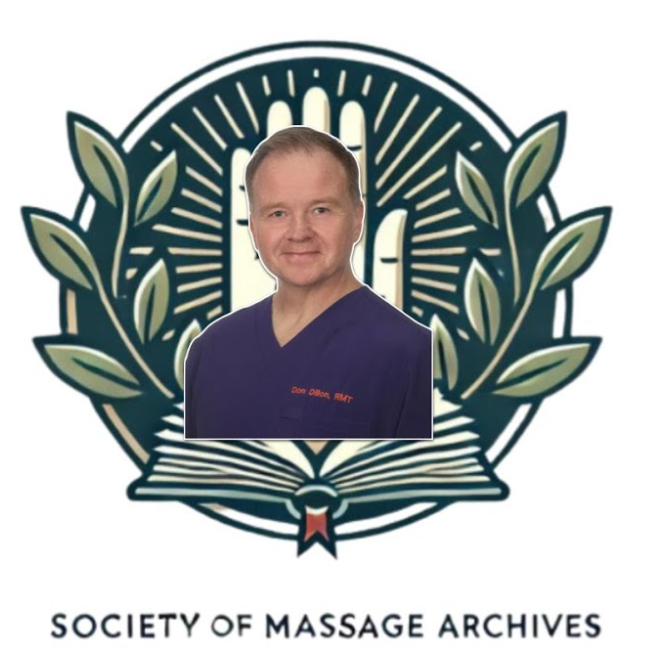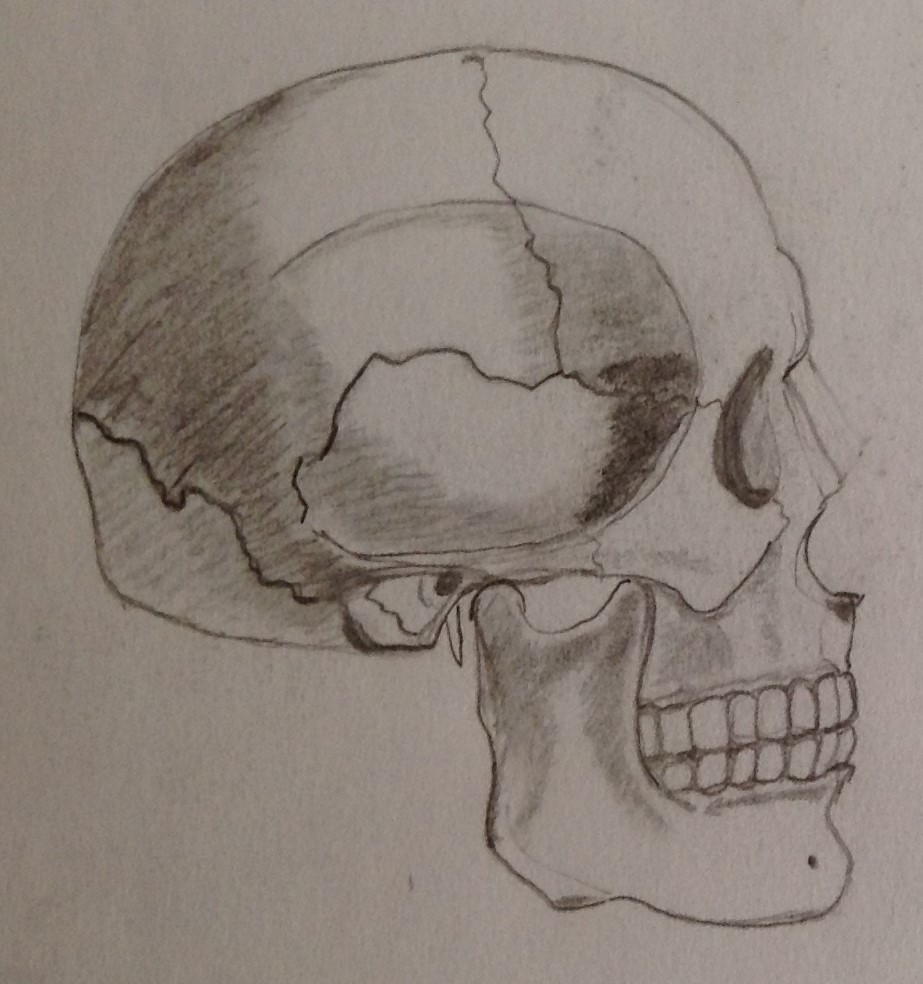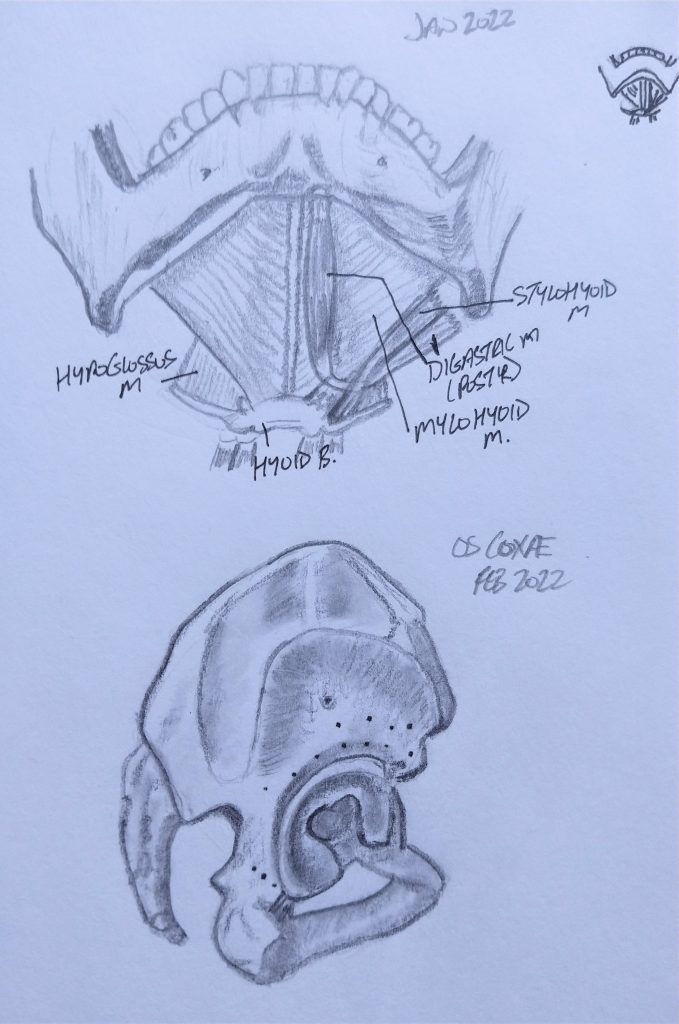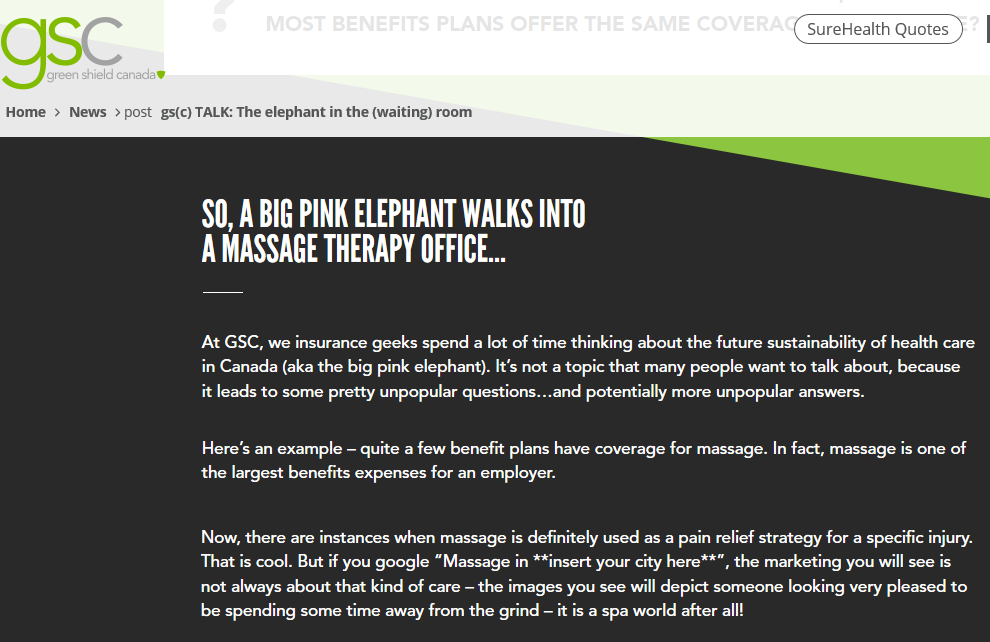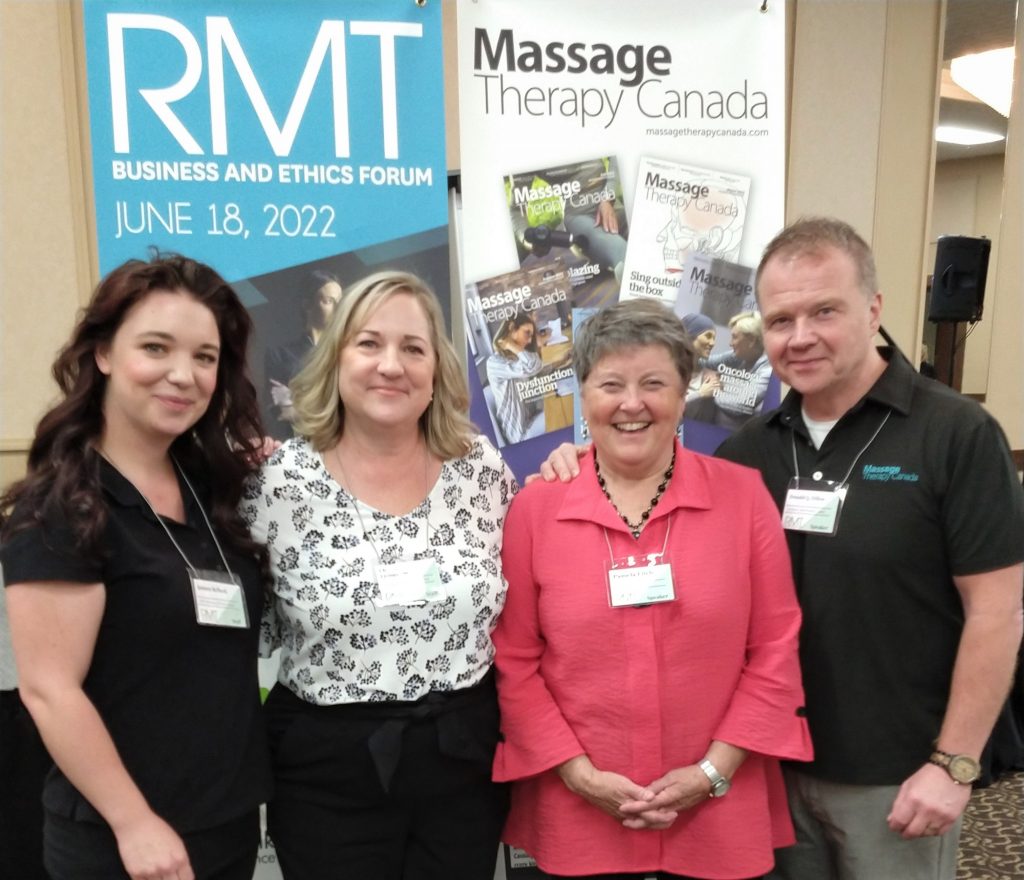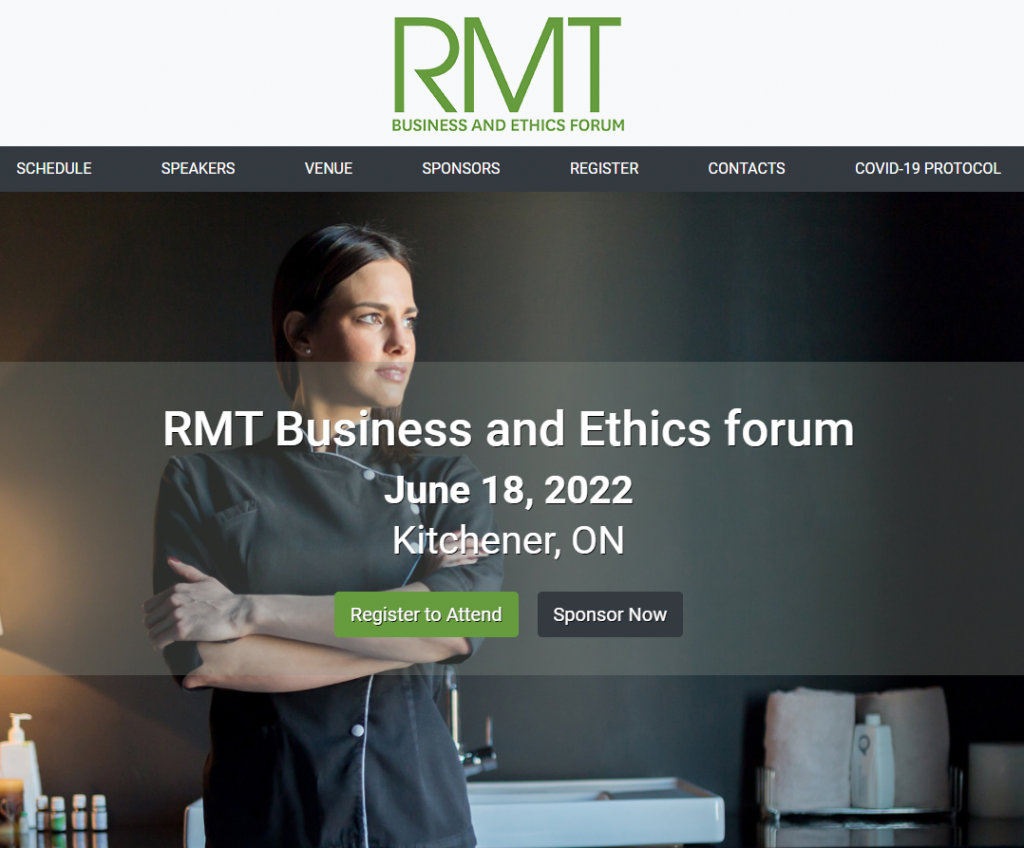Join me on the SOMA: Society Of Massage Archives broadcast, where host Kirby Clark Ellis and I discuss the history of MT regulation in ON & BC, similarities and peculiarities when comparing Canadian and American advancement in the profession, the generational divide that threatens our integrity and the challenges of unifying the profession. On Spotify https://open.spotify.com/episode/4UkQLx48Th0F05yCjsZDVm?si=gpkCY0LiQEmJq33j5qhTxw or YouTube https://youtu.be/0UM7Sn7iav4?si=nK8NReKY_cTn-DqB
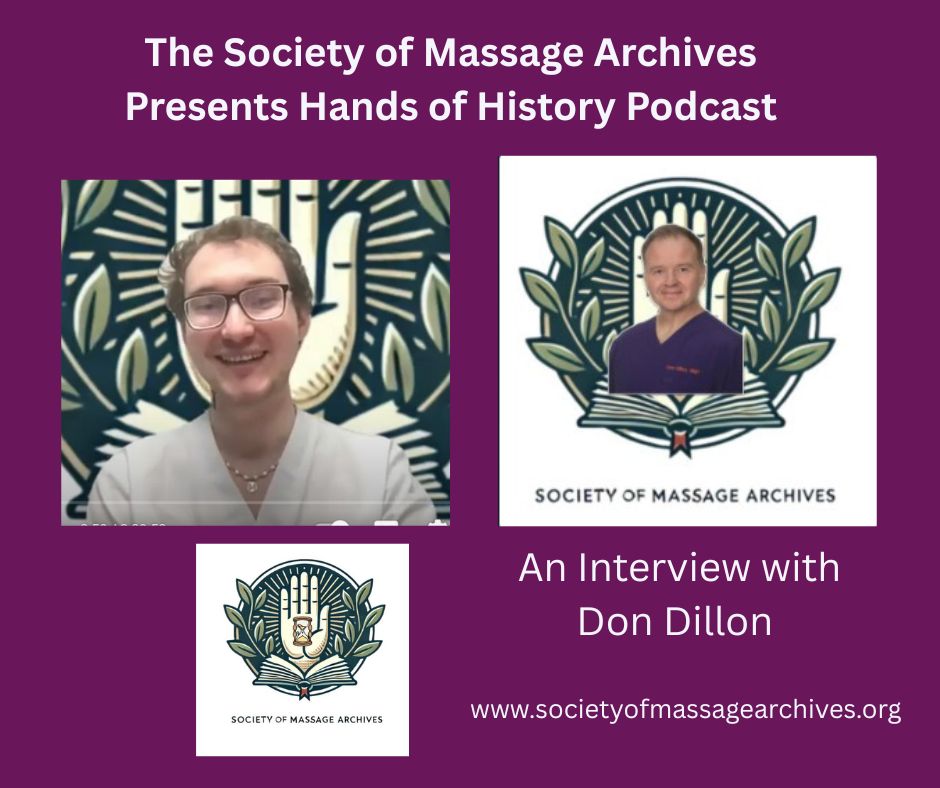
1. What initially drew you to massage therapy as your vocation?
An unexpected but happy circumstance. Dissatisfaction with initial career in data processing, I migrated to the fitness field, where I excelled. I actualized my interest there, and was looking for something new when – leaving a fitness workshop – I passed the Sutherland-Chan School & Teaching clinic. I had not experienced massage before, but read in fitness magazines that massage is a means of improving fitness performance and resolving physical injuries. Several inquiries led to 2-day trial workshop, then a second dose when I was permitted to attend a sports massage workshop, instructed by the massage therapist for the Toronto ballet. I struggled with returning to school, but eventually conceded. The result is I’ve experienced a very fulfilling career, with many diverse experiences, including representing my professional association to government and insurers, lecturing at provincial conferences and massage training schools, and opportunities to consult and to coach.
2. What were your early influences?
My breadth and scope of the profession expanded considerably by reading American publications – Massage Magazine, MTJ and more recently the ABMP’s Massage & Bodywork publication. I attended workshops initially with Upledger Institute, then intensively with Paul St. John re: Neuromuscular Therapy. I’m an ardent fan of Deane Juhan, author of Job’s Body: A Handbook for Bodywork, of Thomas Myers, author of Anatomy Trains, and more recently, Gil Hedley’s anatomical dissection videos.
I’m stirred by the professionalism of Sandy Fritz, Whitney Lowe, James Waslawski and other American practitioners. I appreciate the historical context of Don Hanlon Johnson in his compendium Bone, Breathe and Gesture, and Stanley Keleman’s Emotional Anatomy. My skills attuned and refined considerably because of these American influences.
I’m also influenced by Canadian exemplars – Pamela Fitch, Trish Dryden, Grace Chan, Doug Alexander, among others. I’m particularly influenced by the massage therapists I’ve had a reciprocal care relationship with. True learning in the lab – experiencing, observing and applying.
3. You hail from Canada. Tell us about education, regulation and representation there.
First, I should qualify myself as just one of an estimated 23,000 massage therapists across Canada. Each of the 10 provinces varies in its administration of education, regulation and representation. I have met many massage therapists in my travels, lecturing in 9 of the 10 provinces. I have a keen interest in history of society, and, pertinent to our discussion today, the history and professional culture of MT in North America. I’ve come to understand our discipline is moved by both intrinsic and extrinsic forces.
Some quick facts about regulation and representation in Canada. In my home province of Ontario, the Drugless Practitioners Act was enacted in 1919. In 1935 our governance distinguished from physiotherapists to establish the Board of Directors of Masseurs of Ontario. The Drugless Practitioners Act was repealed in 1991 and replaced with The Regulated Health Professions Act, bringing all regulated health disciplines under one umbrella act. A few years later in 1994, the Massage Therapy Act came into effect, and the regulator was renamed the College of Massage Therapists of Ontario.
*note “college” as regulator, differentiated from a massage therapy school
As for our representative association, the Associated Masseurs was established in 1936. The name later changed to Society of Registered and Remedial Masseurs of Ontario, and in 1973, the organization was chartered under the Ontario Massage Therapist Association. In 2010, the Association’s name was amended to the Registered Massage Therapists’ Association of Ontario.
As for education, in 1989 when I entered Sutherland-Chan, training was provided by four private vocational schools. Education offerings eventually extended to community colleges and private career colleges, bringing the total programs in Ontario alone to 56.
British Columbia was the only other regulated province for many years. In 1946, nurses and remedial gymnasts founded the Association of Physiotherapists and Massage Practitioners (APMP) of BC. In the 1980’s, the physiotherapy association actively campaigned to discredit the training and scope of massage therapists. The APMP split representation, and massage therapists formed their own representative association in 1982. The Registered Massage Therapists Association of British Columbia (RMTBC) is the current iteration.[i]
It’s important to note that while Canada administers “universal health care”, this government-endorsed health insurance does not extend to physical rehabilitative therapies, such as chiropractic, physiotherapy or massage therapy. Yet, for several decades, massage therapy in British Columbia was included in the Medical Services Plan (MSP), therefore available to all citizens of BC. BC RMTs could opt in for their services to be covered under provincial health insurance, removing cost barriers to patients. The MSP for massage therapy was discontinued in 2004 – I believe – and now RMT patients pay out of pocket – or with employee health benefit plans – as in the rest of the country.
As for regulation, in 1995 British Columbia experienced an upgrade in health regulation similar to Ontario. However, BC is again distinct, because in 2024 the health authority in British Columbia amalgamated 30 regulated health disciplines down to 6 regulators. Now, massage therapists – in conjunction with naturopathic physicians, chiropractors and traditional Chinese medicine (TCM) & acupuncturists – are governed by one regulator – the Complementary Health Professionals of BC. There is speculation the same amalgamation will happen in Ontario.
As for education, I am unfamiliar with the origins and history of the training schools in various provinces. I couldn’t find any collated references, so I challenge the profession in Canada to undertake the important task of documenting and making available this history, so we can fill in the context.
For much of our profession’s history in Canada, only British Columbia and Ontario regulated the profession. In more recent years, representative associations organized to serve somewhat of a dual role, until a regulator can be situated in place. The third province to regulate – Newfoundland/Labrador in 2003, was followed by New Brunswick in 2011 and Prince Edward Island in 2019. We still have 5 more provinces to regulate, plus 3 territories.
As per perspectives on Canadian representation and regulation compared to massage practitioners in the United States, I believe the following will be of interest to your listeners. Through social media and other discussions, I perceive many American practitioners believe massage therapy in Canada is better positioned than in the United States. That we’re farther evolved in education, regulation and representation.
Here are some things to consider about the status of massage therapy in Canada: While we have “universal health care” in Canada, the physical therapies – physiotherapy, chiropractic and massage therapy, are excluded from provincial health insurance. Individuals obtaining these services tap limited extended health insurance through their workplace, or pay out of pocket. Currently only half of the 10 provinces are regulated, and none of the three territories to the north.
Registered Massage Therapists (RMTs) overwhelmingly work in private offices, spas or home-based practices. Other than a very few exceptions, RMTs are not in hospitals or community health centres, working with medical professionals such as doctors and nurses.
The process to accredit MT training colleges across the country began constructively in 2015. Many of the schools are not yet accredited. In my province of Ontario, less than ½ are fully accredited.
As for research, I greatly admire how the U.S Department of Health and Human Services funds the National Institute of Health (NIH) and it’s Center for Complementary and Integrated Health. Our Canadian government provides nothing in similar endorsement.
Previously, the provinces of Ontario and British Columbia contributed a combined $59K/year over 11 years (2006-2017) towards research initiatives in Canada. Currently, the 10 provinces now invest a collective $10K CDN a year to the American Massage Therapy Foundation.
In Canada, we really struggle with moving the needle on some issues. A revitalized campaign to remove a consumption tax “Harmonized Sales Tax” on MT services – a tax removed from most regulated health profession services in Canada – remains ungranted by the federal government. This, almost 11 years after smaller, more “alternative” disciplines of naturopathic and acupuncture successfully became exempt.
We regularly suffer undignified national media coverage – typically showcasing insurance fraud, association with the sex trade or acts of MT misconduct, and we have strained relationships with the insurers who approve claims for massage therapy care.
I don’t believe these facts are an ill reflection of decision-makers past or present in education, regulation and representation. I believe they reflect our discipline’s challenges with getting sufficient engagement, transferring knowledge, galvanizing our practitioners and working collectively towards common, beneficial objectives. I expect our American cousins have their share of the same problems.
4. From your perspective, what has been the historical trajectory of massage therapy?
As I understand it, there are a number of socio-economic influences that cultivated fertile ground for your massage therapy practice and mine as they exist today. In a post-war economy, manufacturing sectors in North America switched from producing the machines of war to consumer goods – automobiles, washing machines, houses and road construction.
Consumer demand drove economic growth, leading to job surplus and great demand for skilled workers. Employers offered high wages and employee health benefits to retain these workers, while trade unions negotiated better working conditions to provide workers discretionary money and leisure time.
These economic circumstances led to demand for massage therapy in at least five areas:
Rehabilitation – initially in the treatment of war wounds and the physical consequences of conditions like polio, massage therapy is now applied to rehabilitation of work-related and automobile crash injuries.
Athletics and fitness – With surplus time and an increased appreciation for health and vitality, people began exercising. These new fitness enthusiasts required massage for their acquired aches and pains. High-level athletes see massage as a must-have to ensure athletic performance.
Hedonism and well-being – With more time and money on their hands, North Americans swarmed the European-style spas as refuge from demanding work schedules, and to enjoy their status. The European spa offered a mecca to nurture one’s body beyond the objectives of injury resolution or pain relief. Massage is a primary application in spas and includes various forms of hydrotherapies to enhance relaxation and wellness.
Human potential movement – with post-war reflections on human values, self-cultivation and liberalism, the concept of purposeful life and self-actualization appealed to many North Americans. People who were well-educated with discretionary income invested in psychotherapies, philosophical and religious studies and various forms of bodywork[ii] – all in aspiration for a richer human experience.
Worker performance and productivity – Employers want to maximize worker productivity and job satisfaction, while lowering absenteeism and employee turnover, in an increasingly competitive marketplace. Progressive companies offer workplace wellness programs on-site – including massage services – to counter-act chronic postural stresses and strains from specialized workstations.
As an aside, and in this light of socio-economic progression, I believe it’s unproductive to reduce all massage therapists into a single identity, given the complexity of our origins. It seems practitioner-centric arguments erupt over credibility and legitimacy, yet clearly massage therapists serve a variety of populations with particular needs.
I believe we can embrace the originating roots of our profession, and serve our particular populations of interest without demeaning massage practitioners who serve different populations. As Hunter Lovins said, “You have to take your values from your customers, your designs from nature, and your discipline from the marketplace.”
Incidentally, economic growth supported massage therapy and other wellness-focused industries to thrive. As a result, investment in education, regulation and representation has flourished. Currently, massage therapists across Canada invest millions of dollars every year to finance education, regulation and representation. Think about that…a whole industry developed to support the infrastructure of our profession. A question we might ask, “How’s our return on that investment?” I suggest we regularly evaluate our investments in education, regulation and representation.
5. Why does the historical perspective of massage therapy as a vocation matter?
I applaud the efforts of the Society of Massage Archives for their efforts to preserve history. Let’s be candid…we are having this conversation today in part because the history of our discipline is in danger. I believe an understanding of history is essential to comprehending the origins, context, value and meaning of a discipline, and for transferring knowledge, skills and perspective while carving a path for the generations to come. To understand why I’m very concerned for our collective history, I make a small digression.
Here’s a question for our audience: What is your relationship with the history and legacy of our shared discipline? Do you hold it in regard…or contempt? Are you ambivalent to the origins, consider them fossilized, and put your conviction in technology and “evidence-informed” practice? If so, I have an argument for you to consider.
Outside our discipline, there is a broader cultural shift in the West that has been taking place since the world wars. At that time, collectivist, “we are all in this together” values reigned. But increasingly, we in the West have moved towards individualistic and materialistic values, starting with the Baby Boomers, and amplifying with Gen X, Gen Y, Gen Z, and the upcoming Gen Alpha.
Our daily dialogue as evidenced through books, newspapers and social media have shifted from “us” and “we”, to “me” and “my”. American psychologist Jean Twenge provides a cogent depiction in her 2009 co-authored book titled, Narcissism Epidemic: Living in the Age of Entitlement. I recommend her more recent books on subsequent generations as well.
Our current popular culture worships celebritism. We take our public health direction, political viewpoints, financial and relationship advice from actors, performers, athletes and social media influencers. We distrust public authorities, blaming previous generations for the financial crisis, the housing crisis, the climate crisis, the job market crisis. As a result, the subsequent generations appear to ignore and deplore tradition, experience, tacit knowledge. This is devastating to a profession built on craft, on theory and philosophy, that grew based on the empirical experiences of those that came before us.
There’s good reason for subsequent generations to be terse and aversive. In the West we have increasingly hijacked their hope and optimism. No wonder the youth commonly relate to the homeless, the indigenous, ethnic minorities, people facing oppression of all types…because they themselves feel disenfranchised.
There’s an obligation for previous generations to clear the way, to recognize and address the crises of their generation so as not kick it down the road for the next generation to handle. And I believe people of my generation X, and the previous Baby Boomer generation, have done quite a bit of kicking down the road.
Every generation faces its own challenges, unique to their time. There’s always a gap between generations. Older generations have an obligation to share their stories as anecdotes – not to direct or advise – so subsequent generations can benefit from their knowledge, experience and wisdom.
Technology and the fracturing of our culture in the West has widened the normal generation gap, plus many of us will not pursue the vocations of our parents, so we look outward for guidance as opposed to the usual, tribal traditions. We should remember that a reason for our success as a species is to combine the vitality, curiosity and innovative spirit of younger generations with the knowledge, wisdom and experience of the older.
If you truncate the elder perspective, you eliminate hindsight and risk critical mistakes you would otherwise have anticipated. And the elder wishes to be of utility to younger generations, to pass on what they’ve learned and then get out of the way for the next generation to forge their path and face the crises of their time. In a generation that despises and disassociates from those that have come before, current generations reflect back the wounding they have suffered in feeling disenfranchised from next generations. This dynamic is calamitous for all generations.
So what’s this have to do with the history of massage? Plenty. Our discipline was founded on the meticulous development of theory and philosophy, honed and improved with every passing generation of practitioner. All of us that practice now, acquired knowledge and philosophy from the antecedents before us.
But there’s been a shift in respecting those origins. Along with the West’s abhorrence of anything that as come before, our discipline appears to be cleaning house on the founding philosophies and approaches. Rather than valuing and properly assessing prior teachings, there’s a rush for credibility and legitimacy in the public eye, with attempts to discredit foundational theories rather than framing them as platforms to build upon. That’s like attempting to build a house without laying the foundation.
Where our online discussions should be steeped in informed opinion, historical context, dignified dialogue and debate and infusing the best available evidence, the interactions often denigrate into attempts to score esteem points, an abandonment of consideration for others, and unproductive nastiness. And we have to be cautious what is heralded as “science” is not scientism – a dogmatic ideology – that supplants true scientific inquiry.
Our discipline is so fascinating – the intimate engagement with the psyche and soma through touch, with an opportunity for transformation – and we are fortunate to examine it rigorously and regularly. We lose a lot of time bickering, when we could be using our precious energies to advance the discipline.
Of interest, I recently consulted the websites of both the regulator and the representative in Ontario. I believed these long-established institutions would have something to say in reverence of the history of massage. The regulator had a single paragraph re: history of regulation, while the professional representative lacked any historical context until I complained. Then the latter quickly added a few paragraphs…hardly representative of the breadth and depth of our classic tradition.
I find this example emblematic of the West’s current view of culture and tradition. As author Stephen Jenkinson says in his book Come of Age: The Case for Elderhood in a Time of Trouble, “How are you to persist in a time bent on undoing what precedes it?”
History matters because it is the library of our guild; our theory and philosophy carefully curated and bestowed to the next generation. Our collective history reflects our shared identity. David Lauterstein equated our work as one of the non-verbal humanities. Empirical knowledge becomes the platform to test theories, commission research, and translate new discoveries. Established theories are put up to the light, refined and honed by the subsequent generations to develop, innovate and weave their own perspectives into the discipline’s fabric. And so, our discipline carries on.
In my view, without the context of history, our discipline is diminished to a collection of technical applications easily adopted by lesser skilled, inexperienced profiteers, who undermine the core and nobility of the discipline. “History pulls us together”, as Sandy Fritz said.
Our discipline is capable of personally and professionally advancing the practitioner as it is promoting the well-being of the recipient. Massage in its various forms is a meditative, contemplative art, infused with an increasing appreciation of the science that defines posture, function, behaviour, strain, allostasis and equanimity. It’s wonderful stuff…and everybody should be receiving it! Benny Vaughn said, “the role of massage therapists are to keep people connected to their humanness through touch.” Brilliant words, Benny.
If you doubt our administrations to the body are any less than poetry, consider this quote from the reverent Deane Juhan, his book Job’s Body: A Handbook for Bodywork. “Evolutionary sophistication has irretrievably forced humans to be clever in order to use our heritage for survival. Our somatic education cannot be left to the unconscious unfolding of instincts and reflexes. The rich potentials of our sophisticated biological inheritance necessitate some kind of conscious, exploratory and systematic way (bodywork and somatic education, for example) of teaching ourselves and our offspring how to successfully use, not abuse, the potent range of physical and mental possibilities contained within us”.[iii]
6. What do you wish to share with the next generation of massage therapists?
In my view, our greatest threat to the profession is a failure to utilize the rich human capital we have. ABMP estimated in 2023, there are 321,000 MTs in the USA. Estimates for Canada are 23,000, so combined we have 345,000 practitioners across our two countries who can be employed in government and insurer relations, public and media relations, gatekeeper HCP relations. Rather than relying on volunteer Board of Directors or small operations teams with limited financing, let’s find a way to mobilize our masses towards shared objectives.
I would love to see our professional organizations prepare us, yes, as practitioners – with critical thinking skills and research literacy, business acumen and technical proficiency – but also as agents of the profession in public education, public and media relations, and finding ways to integrate with like-minded complementary health disciplines.
I’d also like to see rigorous engagement with each and every practitioner, in the form of town halls, symposia, roundtables with subject matter experts, and other opportunities for dialogue and debate. We have so much to work on! From basic vernacular to assess and describe the histologic changes we feel with our hands, to commonalities among popular techniques, to practice approaches based on the best available evidence, to how we cope with serving varied populations and complex conditions, to positioning ourselves better with government, insurers, gatekeeper HCPs and the public media.
Those we’ve placed in decision-making positions require of us to cogently define who we are, what we do, why it matters, and how our collective actions can benefit society. So, so very much work to do! And we need all of us actively engaged. Let’s stop magnifying that which separates us and instead find ways to bond and mobilize each of us. We have very important work to do, and we must tap our collective agency if we are ever going to do it.
[i] Thanks to Bodhi Haraldsson for referral to Peter and Margaret Behr re: BC history
[iii] Juhan, D., Job’s Body: A Handbook for Bodywork, Station Hill Press, 1987, pg 50.

